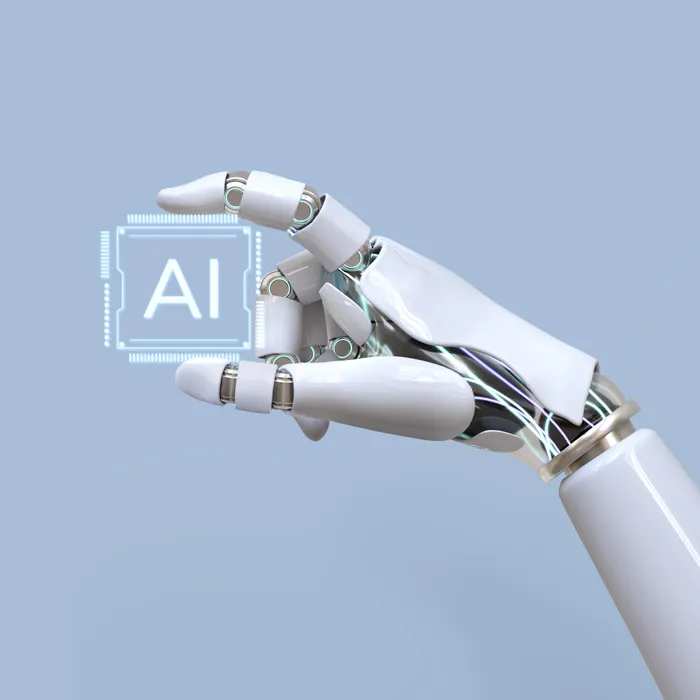
Chatbots that started out as AI-powered assistants have gradually merged with web browsers and can independently scour the internet for detailed answers to questions.
Image: Freepik
SOME of Ellen Rugaber’s high school teachers allow students to use artificial intelligence for schoolwork, but she prefers not to.
“It’s part of growing up to learn how to do your own work,” said the 16-year-old, who attends school in Arlington, Virginia. She doesn’t want to off-load her thinking to a machine and worries about the bias and inaccuracies AI tools can produce, she said.
Abstaining from using AI makes Rugaber one of the few students at her school with strong viewpoints on the technology, she said. Beyond campus, she has company.
As the tech industry and corporate America go all in on artificial intelligence, some people are holding back.
Some tech workers said they try to use AI chatbots as little as possible during the workday, citing concerns about data privacy, accuracy and keeping their skills sharp. Other people are staging smaller acts of resistance, by opting out of automated transcription tools at medical appointments, turning off Google’s chatbot-style search results or disabling AI features on their iPhones.
For some creatives and small businesses, shunning AI has become a business strategy. Graphic designers are placing “not by AI” badges on their works to show they’re human-made while some small businesses have pledged not to use AI chatbots or image generators.
Across industries and use cases, AI abstainers said it’s getting harder - or is impossible - to opt out. Tech companies are constantly adding new AI features to smartphones, office software and other products. Some companies require or strongly encourage staff to use AI tools to get work done. Several tech workers spoke on the condition of anonymity in part because being critical of AI could hurt their standing at work.
Many people find AI tools helpful or interesting. ChatGPT has more than 800 million users each week, according to OpenAI. But those trying to avoid AI share a suspicion of the technology with a wide swath of Americans. According to a June survey by the Pew Research Center, 50 percent of U.S. adults are more concerned than excited about the increased use of AI in everyday life, an increase from 37 percent in 2021.
Michael, a 36-year-old software engineer in Chicago who spoke on the condition that he be identified only by his first name out of fear of professional repercussions, uses DuckDuckGo as his primary search engine, in part because he can turn off its AI features more easily than he can with Google.
“It feels like a con to me,” Michael said of the explosion of AI features in a phone interview. He’s concerned about the toll on the environment from data centers behind AI products and thinks the technology is primarily a boon to “venture capitalists’ valuation portfolios and not a tool that most people benefit from.”
Many AI abstainers cited the technology’s potential for errors. A 40-something government worker in California, who analyzes statistical data for a federal agency and spoke on the condition of anonymity out of fear of losing his job, said top managers have been pushing staff to use ChatGPT. But he feels the stakes are too high to experiment with a tool that might make mistakes.
If a federal dataset contained made-up information from an AI chatbot, the worker said, “immediately our credibility would be shot, and it’s very hard to earn back that trust from the public.”
Some people just don’t see a need to use AI. Jacob Sears, a 31-year-old who works for a mental health nonprofit in Fairbanks, Alaska, feels inundated by AI wherever he goes.
“It does really feel like it’s being shoved down my throat,” Sears said. “I’m not seeing any convincing reason to use it. I can type my own email quicker than I can tell a chatbot what to say.”
Sears has tried to turn off AI features wherever he can.
But some people find AI can harm productivity at work. Michael, the Chicago software engineer, said that GitHub’s AI-powered Copilot system reviews all changes to his employer’s code but recently produced a review that was completely wrong.
He also has to correct errors made by junior engineers who are encouraged to use AI to generate code, Michael said. But it’s difficult to speak up about such problems. “It’s become more stigmatized to say you don’t use AI whatsoever in the workplace. You’re outing yourself as potentially a Luddite,” Michael said.
Workers in several industries said they were concerned that junior employees who leaned heavily on AI wouldn’t master the skills required to do their jobs and become a more senior employee capable of training others.
Some young people are making a conscious effort to avoid becoming dependent on AI. Elias Gondwana, a 20-year-old studying plant and animal biology at Deakin University in Melbourne, Australia, said he finds it puzzling when fellow students rely on AI.
“It seems counterintuitive to be going to university to learn as much as you can, and skipping over the most interesting parts of learning something - or at least the parts that lead to developing interesting skills,” Gondwana said.
While many corporations are heavily invested in AI, some small businesses are purposefully eschewing it. Last month a music venue in Oakland announced it would no longer accept artists’ fliers for shows if they had been made with AI tools.
Some artists and designers have adopted a logo to signal that their content is primarily human-made.